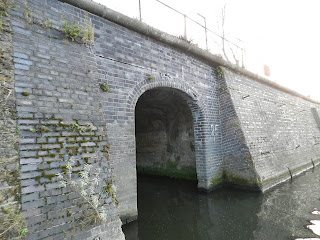Habitat: Daubenton's bat
 |
| Barge Tunnel Seething Wells |
The following is what the Bat Conservation Trust say about my normal habitat: see more Bat Conservation Trust
Habitats
In England and Wales, the majority of known summer colonies are in humid, more or less underground sites near water.These may be tunnels or bridges over canals and rivers, or incaves, mines and cellars. They are only occasionally found in buildings, usually old stone structures such as moated castles and waterworks.
In Scotland, colonies more frequently occur in buildings. Tree-holes are probably much more widely used than the recorded evidence suggests and one individual was even observed entering a small hole in an earthen roadside bank. They have also bred in bat boxes. Summer colonies are often quite noisy throughout the day, especially at sites where they are close to human activity. A variety of temporary night roosts are used, often in trees or tunnels close to the feeding sites. Daubenton’s bats have been found clustering with pipistrelle, noctule, Natterer’s and brown long-eared bats. Many Daubenton’s bats hibernate in caves, mines and other underground sites.
In extensive tunnel systems, as at Seething Wells, Daubenton’s are often the most numerous species. They enter these winter sites in October, but only small numbers are present in the early part of winter. Numbers can increase dramatically towards the end of January and February, and individuals often remain at these sites until the end of March or even early April.
Most are found in the warmer more stable environment within a site, although they can be found close to the entrance, particularly later in winter. Although usually solitary, small groups of three or four are not uncommon. Individuals are often lodged in tight crevices, Daubenton’s bats may also hide among rocks and scree on the floor of caves and tunnels

Comments
Post a Comment